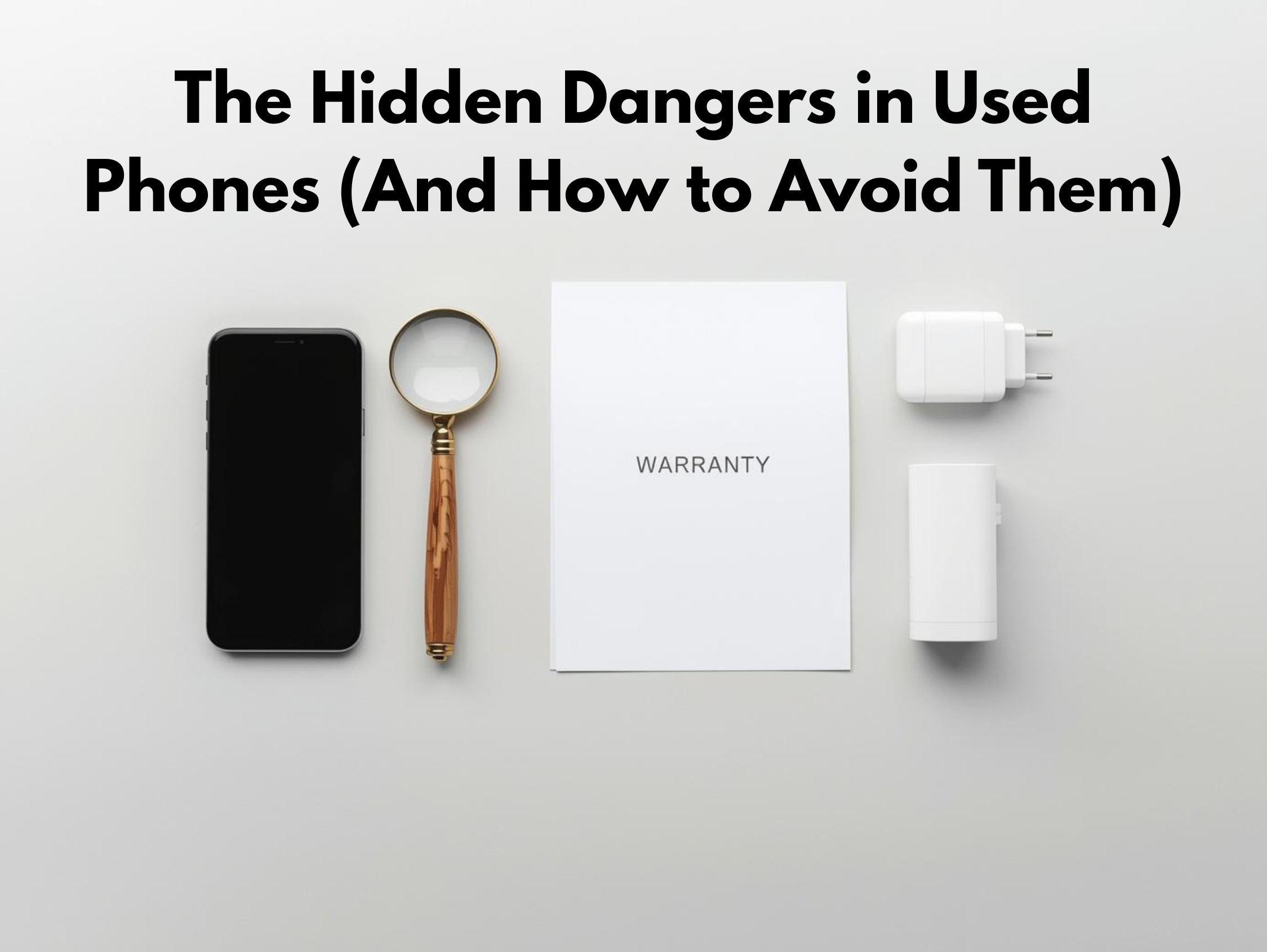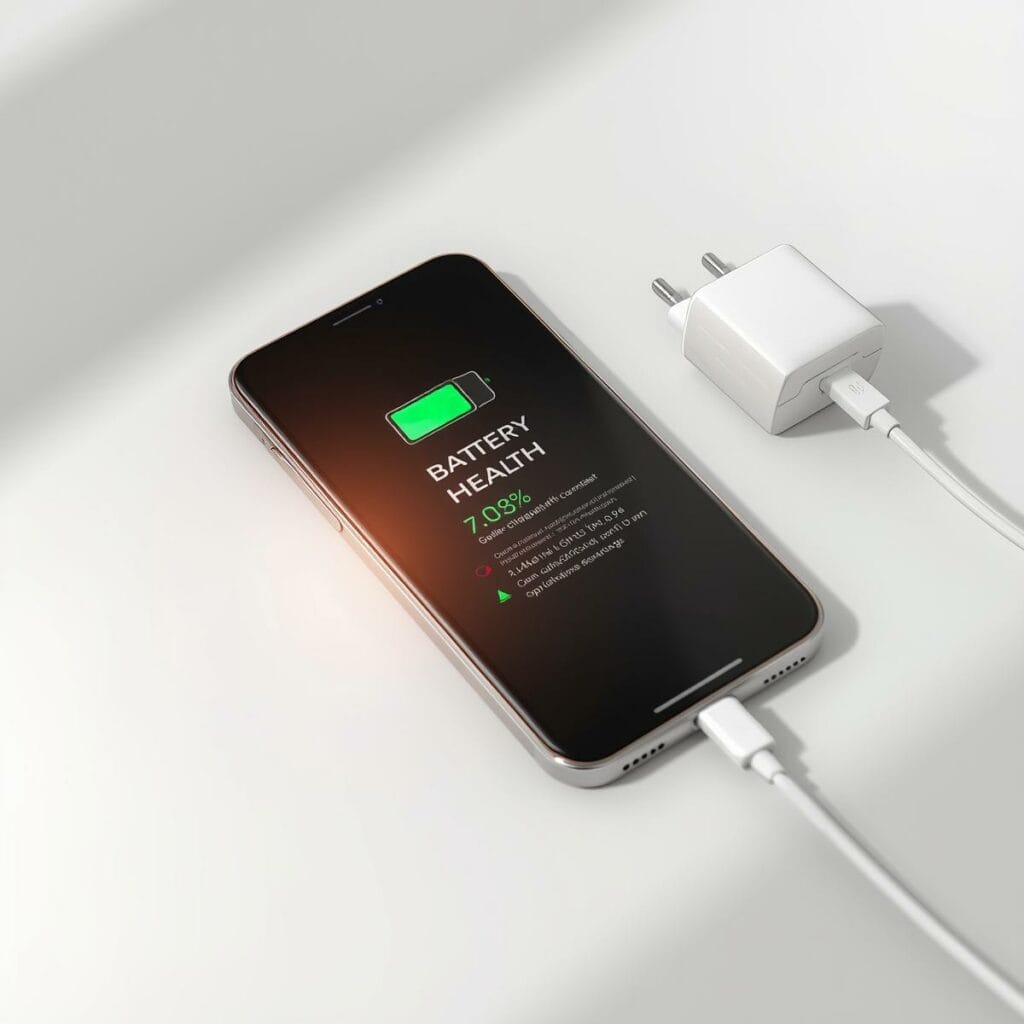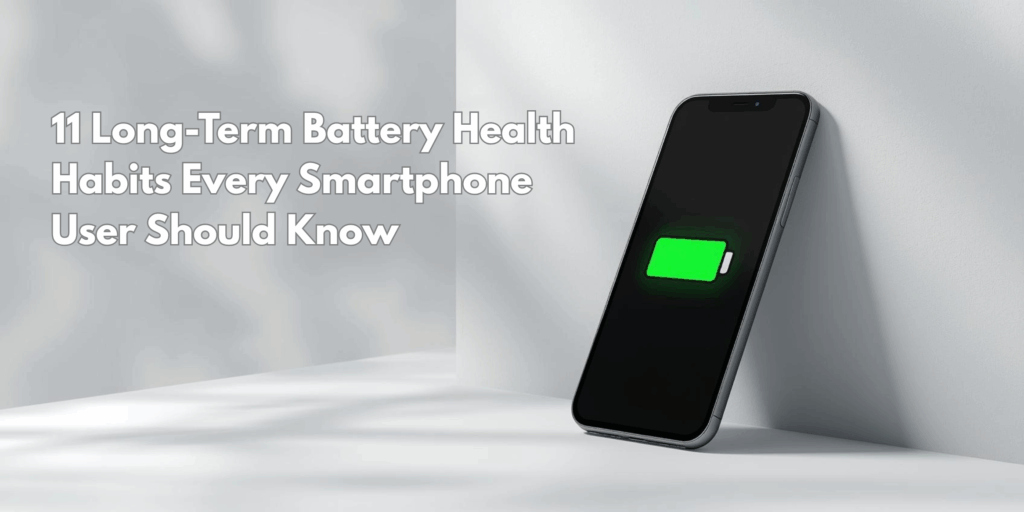Smart Buyer’s Guide to Used Phones: Save Money & Skip Regrets

Best Used Phone Buying Guide 2025: If you’re planning to buy a second-hand phone, this guide will help you avoid costly mistakes. From checking the IMEI to testing the battery and warranty, here’s everything you need to know before making a smart purchase.
1. Check the IMEI (International Mobile Equipment Identity)
One of the first things you should verify is the phone’s International Mobile Equipment Identity (IMEI). This unique number helps you:
- Ensure the phone isn’t stolen or blacklisted
- Check warranty status and manufacturer coverage (for example, coverage Apple or support for AppleCare service).
- Confirm if the device is genuine, not a fake model.
Ask the seller for the IMEI, then use official tools (e.g. Apple’s “Check Coverage” page) to verify warranty and service eligibility. If the warranty or AppleCare battery replacement plan is expired or non-transferable, that reduces value.
2. Inspect Battery Health and Charging Accessories
Battery condition is crucial. A phone may look perfect externally but have a severely degraded battery, which means:
- Poor battery life (you’ll need to charge often or carry a portable charger).
- Possible overheating or failure.
If possible, check whether the battery holds charge well, measure how quickly it drops, or demand proof of battery diagnostics. For iPhones, check the battery health in Settings. Ask if the seller replaced battery under AppleCare or had service records.
Also check whether the battery charger (or original charger) is included and functional. Sometimes sellers skip this, which means extra cost.
When checking a used phone, battery health percentage gives you a quick idea of condition. Here’s how it looks in practice:

3. Warranty, Refurbishment, and Service History
Before buying a used iPhone, always check these three important factors.
Does the phone have warranty left? A phone under warranty (or with valid AppleCare service) is much safer.
Has it been refurbished? If so, was it refurbished by the manufacturer or a third party? Manufacturer refurb usually means better quality control.
If repairs (like screen replacement) were done, check if they used original parts. For iPhones, using non-genuine parts may affect performance or resale value.
Used phones like iPhone 12 second hand, iPhone 13 second hand, or iPhone 14 second hand are common. But older iPhone models may no longer receive software or hardware support. Verify whether there is any coverage or service still available.
4. Physical Condition & Component Check
Before buying, carefully inspect the phone’s exterior and test key components.
Check for:
- Cracks, scratches, fused ports, water damage.
- Functionality: camera, speakers, buttons, touch screen, sensors.
- Confirm if screen repairs were done properly (non-original glass or poor replacement can cause issues)





5. Software, Updates, and Support
Is the phone still receiving software updates? Older models may be discontinued. If iOS or Android support ends, you may be vulnerable to security issues.
6. Price vs Life Cycle Assessment & Environmental Impact
Buying used is in itself better for reducing electronic trash and e waste. But some models have a large footprint due to short lifespan, cheap parts, or poor repairability.
An environmental impact study or life cycle impact assessment will tell you how much carbon and resources were used in making the phone, transporting it, using it, and disposing of it. If you buy a phone that lasts longer (or is repairable), that lowers its life cycle assessments.
Carbon Footprint
Production and shipping contribute most to CO₂ emissions. Lower is better.
Resources Used
Mining rare earth materials and metals has environmental costs.
Repairability
Phones that can be repaired extend lifespan and reduce waste
Lifespan
Long-lasting devices lower their total life cycle impact
What Impacts the Environment Most?
Factory
Most emissions come from manufacturing (70%)
Battery
Usage & charging contribute about 20%
Recycling
End-of-life disposal/recycling ~10%
7. E-Waste and E-Waste Recycling
When a used phone fails, or if you’re buying one, think about the end-of-life phase:
- Are there reliable e-waste collection or electronic waste recycling programs in your area?
- Is the seller aware of the phone’s components (battery, charger) contributing to electronic trash if disposed improperly?
- Recycling or properly disposing helps reduce environmental harm.
Learn more about global e-waste and recycling efforts in the UN Global E-Waste Monitor
8. Alternatives & Smart Buying Tips
Before you commit to a used phone, here are some smart tips to get the most value and avoid hidden costs.
- Buy certified refurbished devices that include warranty.Buy certified refurbished devices that include warranty.
- Ask for original accessories — a missing charger or portable charger mismatch can cost extra
- Negotiate based on condition, age, and battery health
- Compare with buying second hand Samsung or other brands, which may have cheaper repairs or easier replacement parts
9. Red Flags & When to Walk Away
You should be cautious or decline buying if you spot any of these warning signs:
- IMEI is missing or doesn’t match the box/documentation.
- Device shows signs of water damage without service history.
- Repairs done with non-original parts (screen replacements that glitch)
- Warranty/AppleCare info is unverifiable or expired.
- Price seems too good compared to fair market (might be stolen or heavily used).
Conclusion
A used phone can be worth buying if you carefully check the IMEI, warranty status (including AppleCare battery replacement or equivalent), battery health, original accessories, and evaluate the environmental cost. Don’t forget the role of life cycle assessments and environmental impact study in understanding the broader effects of electronic waste.
By following this comprehensive used phone buying guide, you can shop with confidence. Remember these key points to make sure you’re getting the best value for your money.

